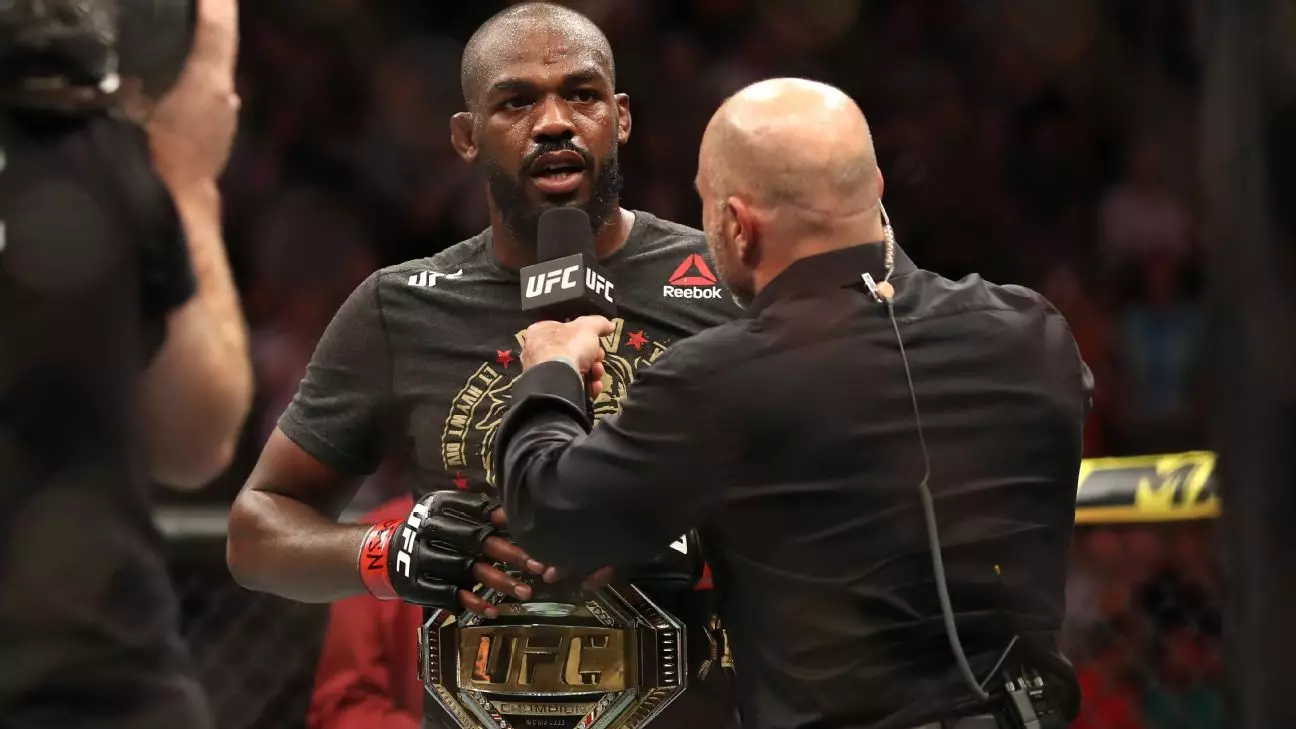The world of mixed martial arts (MMA) thrives on the drama and intrigue that a potential fight between champions brings. This year’s UFC 309 is already shaping up to be a landmark event, not just because of Jon Jones’ return to the octagon but because of the looming question over his future in the sport. In a recent discussion on „The Jim Rome Show,“ UFC CEO Dana White unequivocally positioned heavyweight champion Jon Jones against the current interim champion, Tom Aspinall, if Jones wishes to continue his fighting career following his bout with Stipe Miocic. This assertion leads to a deeper examination of every fighter’s trajectory, contractual obligations, and fans’ expectations in the evolving landscape of UFC.
The Stakes of UFC 309: A Championship Odyssey
Jones, a fighter with a complex legacy, is set to face Miocic at UFC 309. Despite his status and achievements, there’s a sense of uncertainty surrounding his next moves after this fight. White has been clear: if Jones opts to continue fighting, he will face Tom Aspinall and not a potential matchup with Alex Pereira, the current light heavyweight champion. This presents a significant narrative twist as Jones has expressed a willingness to vacate his heavyweight championship—an abrupt shift for a fighter of his caliber who has long held onto his titles. This situation raises questions about Jones’ commitment to the heavyweight division and the possibility of maintaining a legacy that spans multiple classes.
While fans may be enticed at the prospect of Jones stepping in the ring against Pereira, White’s statements dismiss that notion outright. He argues that Jones, with his extensive wrestling background, holds a significant advantage over Pereira, who is primarily a striker. It underscores a crucial point: competing in the octagon is not merely about popularity; it’s also about skill sets and matchups that make sense within the UFC framework. White’s unwavering focus on Aspinall exemplifies a broader strategy of ensuring that reigning champions face the best available contenders, a fundamental tenant of competitive sports.
Aspinall, a fighter who has quickly made a name for himself with his explosive performances, presents a worthy challenge for Jones. His knockout victory over Sergei Pavlovich solidified his status as a top contender and demonstrated that every second matters in his fights. With an impressive track record, including finishes that rarely extend beyond the first round, Aspinall represents a fresh and dynamic challenge for Jones, one that many see as a litmus test for the seasoned champion’s adaptability in a sport that evolves rapidly.
The tension is palpable, especially given Jones’ expressed disdain for facing Aspinall. By labeling him an „a–hole“, Jones reveals a more personal angle to the professional rivalry, which deepens the intrigue surrounding their potential clash. While some may interpret this as Jones avoiding competition, White’s defense of Jones emphasizes that such a narrative oversimplifies a complex athlete with a long history of taking on top competitors. The age of 37 could be seen as a critical juncture in his career, where the balance between legacy and legacy-preservation becomes ever more delicate.
As Jones prepares for his fight with Miocic, the outcome could have far-reaching implications beyond that night. If victorious, the inevitable matchup with Aspinall could become one of the defining moments in heavyweights‘ history, contrasting the established legacy of Jones with the rising star power of Aspinall. While White acknowledges the great potential for a big-money matchup between Jones and Pereira, there’s a strategic approach to maintain the integrity of championship pathways, often overlooked by fans craving spectacle over sport.
In a world ruled by combat sports, narratives are intertwined with strategy—fighting can often appear to be about semantics as much as skill. Jones’ reluctance to engage with Aspinall could be viewed through a lens of champion versus challenger dynamics, a classic struggle played out in many sports. Ultimately, Dana White’s promotional vision keeps the focus where it belongs: on delivering the best matchups to the fans while ensuring that champions respect the opportunities afforded to hungry contenders like Aspinall.
As the UFC continues to evolve, the transparency of intentions and motivations behind fighters‘ decisions becomes crucial for fans who want to see their champions pitted against the most deserving competitors. Whether it’s Jon Jones or Tom Aspinall, every fight shapes the legacy of MMA—and the anticipation surrounding UFC 309 is just the beginning of a potentially transformative story for the heavyweight division.


Napsat komentář